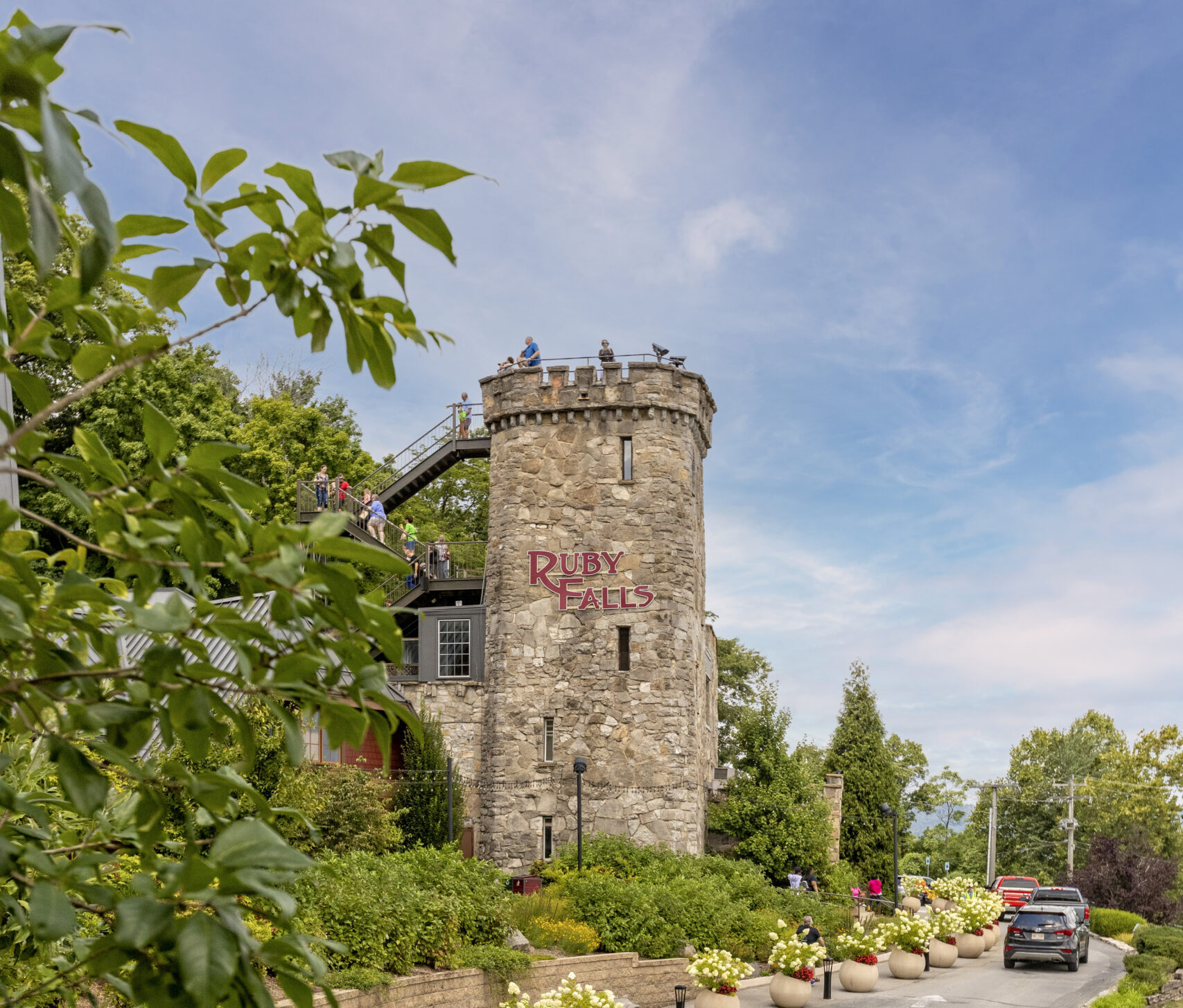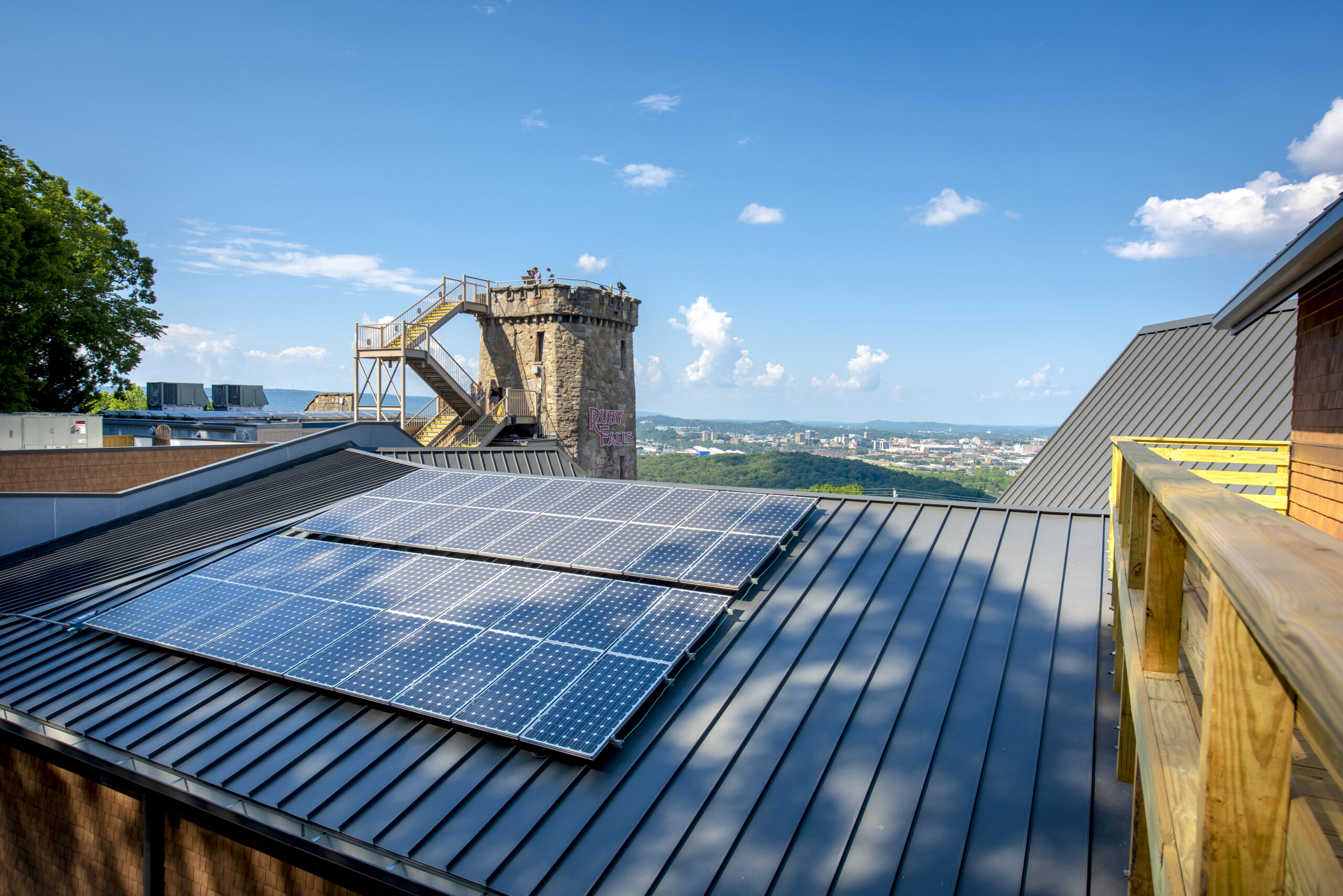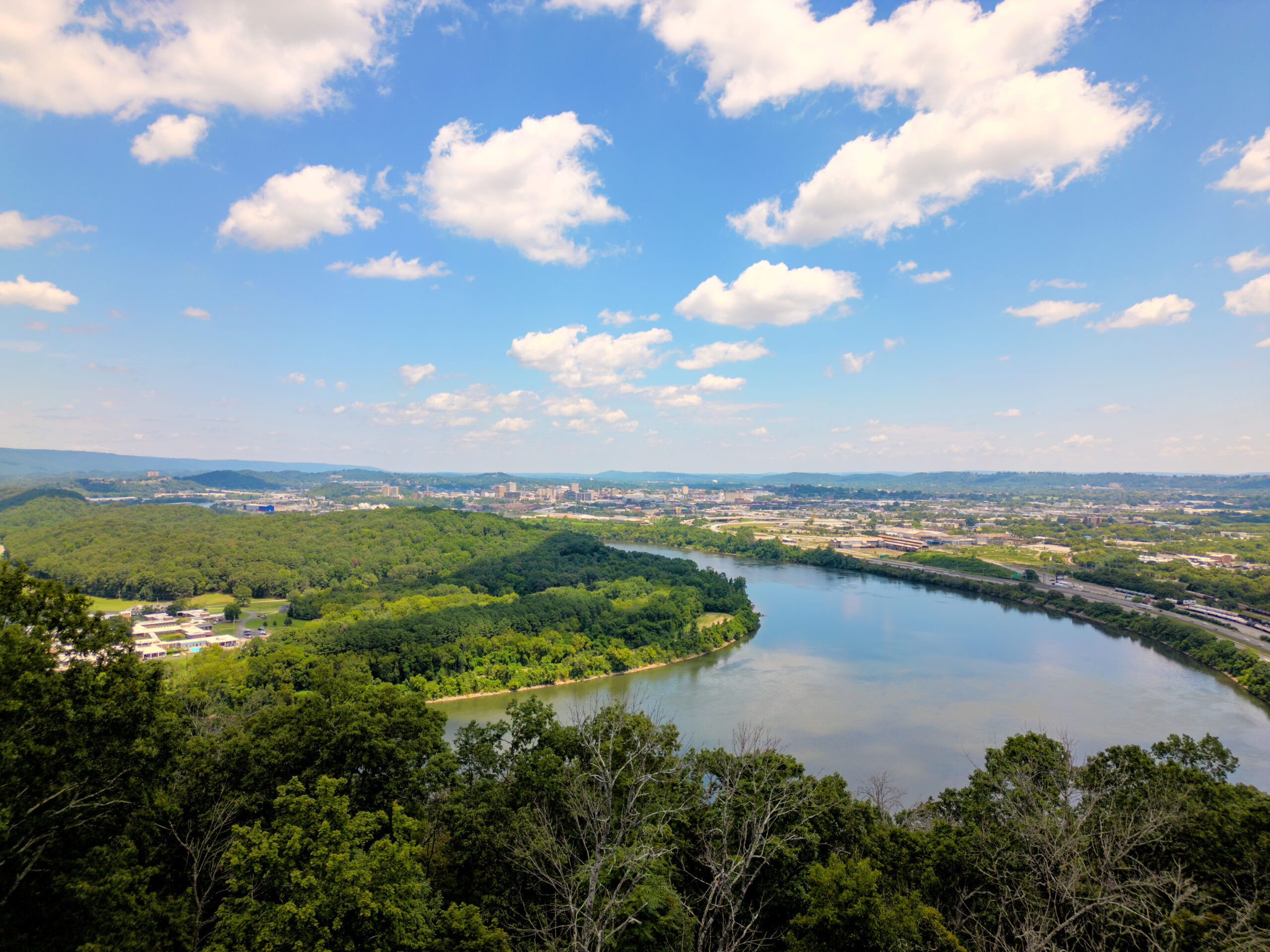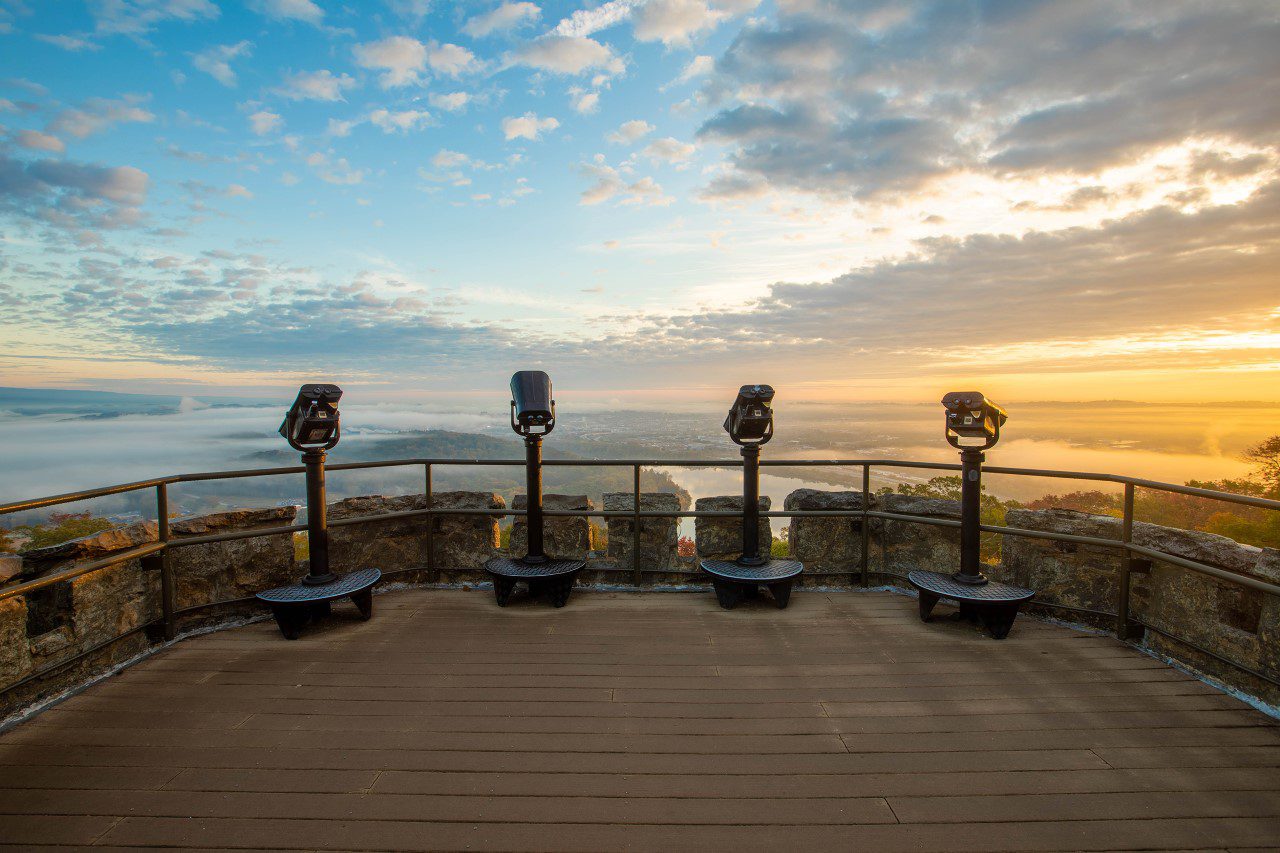Ruby Falls is committed to taking meaningful and measurable action to support a healthier planet.
Our mission of inspiring extraordinary connections to nature through wonder and adventure is dependent on our ability to protect the precious resources in Ruby Falls Cave and the earth’s resources for generations to come.
As the first attraction in the United States to earn certification from Green Globe, the respected worldwide standard for sustainability, Ruby Falls is a leader in tourism sustainability and environmentally-sensitive business practices.
Our conservation initiatives are centered on six environmental focuses – land use planning, renewable energy, waste reduction, water conservation, reduction of greenhouse gas emissions, and air quality initiatives.

Land Use Planning
We design and construct new venues and complete restoration projects by utilizing green building techniques. New venues and facilities are placed sensitively on the land to protect natural habitats, maximize vegetated open space and utilize storm water management strategies to control the amount of runoff from the site.

Renewable Energy
Buildings are the single largest consumer of energy in the United States. According to the Environmental Protection Agency (EPA), building usage accounts for 50-75% of all electricity produced nationwide. Much of this energy is wasted due to inefficiencies and typical human behavior. Special attention to energy performance is a priority in design strategies for new venues and the restoration of historic Ruby Falls Castle. The Bronze LEED Certified ticket atrium and Village Gift Shop completed in 2018 was designed to protect energy performance and over 24% more energy efficient compared to conventional construction. The energy-efficient envelope, low-E windows, LED lighting and controls, efficient HVAC system and building automation system all contributed to this performance.
Daylighting is integrated into new venues with controlled admission of natural light, direct sunlight, and defused light. Daylighting is balanced with thermal issues such as winter heat loss and summertime heat gains.

Waste Reduction
Food residuals and compostables are diverted from landfills through composting. Ruby Falls composts all organic residuals off-site where it is turned into a nutrient-rich soil product. Food packaging is minimized and when used, 100% compostable food packaging is utilized. Composting collection stations are located in the Cafe Castle and in back of house stations for team members.
Materials and resources are tracked closely during design and construction projects. More than 75% of all construction waste was recycled rather than sent to the landfill during our 2018 major expansion project. More than 10% of the materials used to construct the new venues contain recycled content, and more than 20% of materials were manufactured within a 500-mile radius of the building. Recycled content and regionally sourced materials lessen the greenhouse gas emissions associated with manufacturing and transporting materials. Examples of materials that contain recycled content are steel, concrete, insulation, drywall, access flooring, carpet, acoustic ceiling, tile flooring, and countertops. Examples of regional materials include carpeting, drywall, precast concrete, metal roofing, and acoustic ceiling tile.

Water Conservation
Through water conservation efforts and using reclaimed water, we work to reduce potable water consumption at Ruby Falls. Rainwater is captured and filtered in giant tanks under the Village Plaza. This water is used instead of potable water for landscape irrigation at Ruby Falls, saving more than 16,000 gallons annually. Native and drought tolerant vegetation is utilized in landscaping to further support water conservation.
Water conserving plumbing fixtures are installed in all restrooms. These fixtures improve indoor water consumption by about 38,287 gallons per year, giving us over 39% water use savings compared to a similar conventional building. That’s about the same volume of about 7 typical swimming pools.

Reduction of Greenhouse
Gas Emissions
Buildings are the single largest consumer of energy in the United States. According to the Environmental Protection Agency (EPA), building usage accounts for 50-75% of all electricity produced nationwide. Much of this energy is wasted due to inefficiencies and typical human behavior.
Special attention to energy performance is a priority in design strategies for new venues and in the restoration of historic Ruby Falls Castle. The new ticket atrium and Village Gift Shop completed in 2018 was modeled to protect energy performance and is more than 24% more energy efficient compared to conventional construction. The energy-efficient envelope, low-E windows, LED lighting and timer controls, efficient HVAC system and building automation system all contributed to this performance.
Daylighting is integrated into new construction with controlled admission of natural light, direct sunlight and defuse light. Daylighting is balanced with thermal issues such as winter heat loss and summertime heat gains.
Alternative forms of transportation are encouraged through Ruby Falls team carpooling, nearby access to bike paths and onsite electric vehicle charging stations. Public transit route is available with stops just over a half-a-mile away from Ruby Falls.
The refrigerants used in the cooling and refrigeration systems are not CFC-based, which negatively impact our ozone.
Low-emitting paints, sealants, and flooring were used to protect the health and well-being of occupants from the volatile organic compounds (VOCs) that are typically found in these products, which negatively affect respiration. These products were carefully tracked for compliance with strict VOC limits. Interior finishes have been selected for their durability, but also healthy indoor air quality properties. The floor finishes are a mix of low-emitting carpeting and resilient flooring with ceramic tile in the restrooms. Resilient flooring was selected in many spaces for healthy cleaning purposes.

Air Quality Initiatives
Ruby Falls prohibits smoking within 25’ from public and administrative entrances.
Healthy cleaning practices are employed to clean effectively without harmful chemicals.
According to the EPA, people spend more than 90% of their time indoors, where contaminants can be up to 10 times higher than outdoors. Heightened ventilation performance was included in the design of our new venues by installing a dedicated outside air system with CO2 sensors to monitor the airflow in densely occupied spaces.